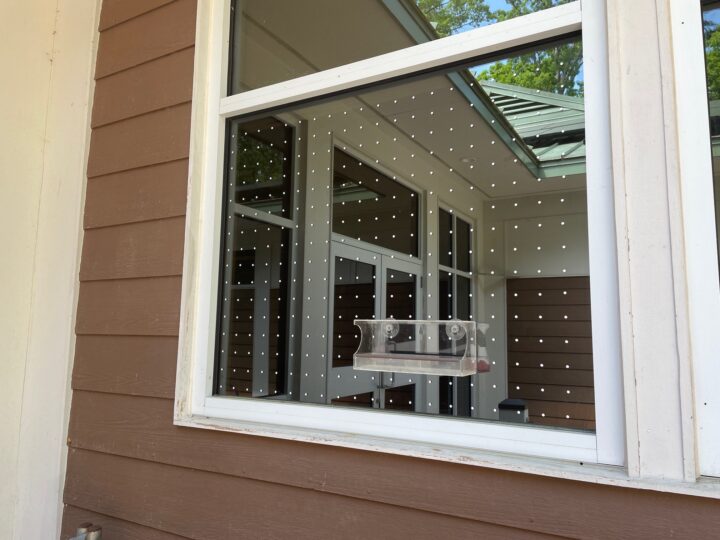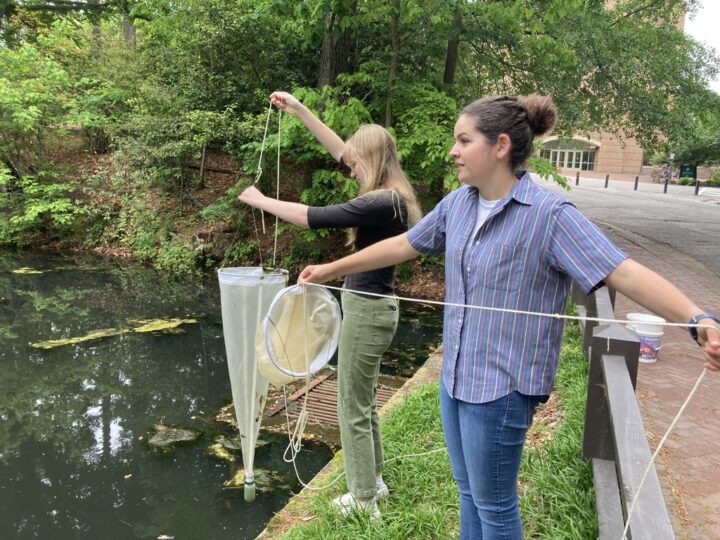Fall 2021 Projects
William & Mary Sustainability has announced the Green Fee awards for the 2021-2022 academic year. With the promotion of sustainable practices at the forefront of these grants, there were 22 projects awarded funding throughout the fall, spring and summer application cycles. W&M Sustainability approved a total of $143,064 in grants and $90,000 in loans to be spent across an array of projects on campus, ranging from academic research to operations that make the institution more sustainable.
The W&M Green Fee program has been providing funding to the campus community since its establishment in 2008. It has funded sustainability research, outreach, operations, and much more. The Committee on Sustainability accepts Green Fee proposals every semester. The following descriptions were taken from the project proposals and edited to comply with the style used by W&M News.
This Fall's Approved Projects:
Analogica
$2,500 to Jacob Brotman-Krass ’22, Anthea Empson ’22, Payton Reidy ’23 and Ran Yang, Lecturer of Physics
Analogica is a device that interprets electronic signals in plants and turns them into music, using environmental factors to influence various sound qualities. The purpose is to connect the user to their natural environment, addressing an oft-missed aspect of sustainability: a personal connection to the land and nature. Funding will enable integration of this device into the McLeod Tyler Wellness Center’s classes and availability to the student body, which will open avenues for education and inspiration for positive change.
Bird Collision Window Tape for Keck Lab
$1,025 to Madeline Reinsel, Research Assistant
Bird collisions with campus building windows are a major environmental issue at the university. This project will include installing bird collision tape on additional windows at the Keck Lab, where a large number of bird collisions and deaths are known to occur, especially during migratory seasons. Working with Chancellor Professor of Biology Professor Dan Cristol and students, the project organizers will study the reduction in bird collisions before and after bird tape is installed. The organizers are hopeful that this additional bird collision tape will dramatically reduce or completely eliminate bird collisions with Keck Lab windows.

Briggs Amphitheatre house lighting
$3,000 to Nicholas Hollomon, Assistant Director of Technical Services/Briggs Supervisor
During the past two years of the pandemic, The Martha Wren Briggs Amphitheatre at Lake Matoaka has become an essential part of campus life as a safe outdoor space. Between hosting more events and partnering with Campus Recreation, there has been a significant increase in foot traffic at all hours of the day and night. Fun and safety is the main concern for all associated with the theatre space, and it’s with that in mind that this project will improve the house lighting. By converting all work lights to L.E.D., it will make the space brighter and more sustainable. This will be a cheaper and more efficient way to light the theatre for all who come and enjoy the space in the evenings.
Building Community & Reducing Waste
$4,000 to LaRhonda Johnson-Horton, Assistant Director Community Development
The Center for Community Development (CCD) is a creative planning space and resource room where Campus Living Student Staff and Student Organizational Leaders create bulletin boards, posters and craft materials to advertise events, educate residential students, share W&M community happenings and beautify the residence halls. Student leaders who use the CCD are tasked with transporting large items to each residence hall, the Campus Center and the Sadler Center. The allocated funds will be used to purchase totes and reusable bags to replace the single-use plastics currently provided for creating, storing and transporting items. The expected outcomes are to eliminate the use, purchase and dependence on single-use plastics and practice stewardship of resources. The hope is this practice will translate into other components of student life across campus.
Crim Jell: Effects of Water Conditions on Blooms of the Freshwater Jellyfish, Craspedacusta sowerbii
$4,737 to Alexis Reece ’22, Maria Clagett ’24, Abby Hazelgrove ’24 and Jonathan Allen, Associate Professor of Biology
The invasive jellyfish Craspedacusta sowerbii is widespread in freshwater systems around the world, and W&M’s own Crim Dell is no exception. Recently, explosive blooms in the C. sowerbii Crim Dell population have become more frequent, occurring every two years as opposed to once or twice a decade. Such rapid increases in C. sowerbii numbers have been correlated with rising temperatures worldwide due to climate change. This Green Fee project will fund the installation of year-round temperature, dissolved oxygen and conductivity probes in the Crim Dell that will elucidate the connections between water conditions, specifically temperature and the increasing frequency of C. sowerbii blooms. This project will also provide an opportunity for education of the local community regarding freshwater jellyfish and the often harmful impacts of invasive species such as C. sowerbii.

Global Innovation Challenge (WMGIC)
$3,000 to Sophie Workinger ’24 and Robert Rose, Executive Director of the Institute for Integrative Conservation
After five consecutive years of running a successful 24-hour case competition, the W&M Glocal Innovation Challenge wants to expand its impact past its day-long timeframe. With its last competition, WMGIC engaged over 110 students from 15 different universities worldwide and worked with 40 judges and mentors to address a case regarding palm oil in Kalimantan. While these staggering numbers are impressive, WMGIC’s goal is to continue the conversation on international and sustainable development even after the competition ends. The funding from the Green Fee will help WMGIC continue to spread opportunities for sustained engagement and awareness about the year’s case competition at W&M.
Outdoor Solar Workstation
$5,000 to Citiana Ali ’23, Colleen Norton’21, Emma Rebour ’21 and Rowan Lockwood, Geology Department Chair and Professor
Due to the COVID-19 pandemic, students on campus are increasingly searching for outdoor study spaces. Not only would this outdoor solar workstation provide those, but it will allow for students to charge their heavily relied on electronics such as computers and tablets by providing 120 volts of energy. The goal is the promotion of the use of renewable energy across campus by educating students on how it can be woven into their personal and professional lives. All the while, this study space will serve as a symbol of W&M’s commitment to more sustainable sources of energy.
Pollinators and the Nectar Microbiome in Common Milkweed
$4,978.15 to Heather Natterer ‘22, Ivan Munkres M.S. ’23 and Kurt Williamson and Harmony Dalgleish, Associate Professors of Biology
Floral nectar is a small, ephemeral environment inhabited by specialized bacteria and yeasts. These microbes have been shown to alter nectar chemical composition in ways that impact pollinator preference. This project aims to compare how microbial community composition and nectar sugar profiles are affected by different types and amounts of pollinator visitation in common milkweed, Asclepias syriaca. Significant changes are likely to influence plants’ probabilities of successful pollination, and ultimately, the availability of milkweed for the declining monarch butterfly Danaus plexippus.














